Yes, it was Roman festival time again, this time Colchester, or Camulodonum on 30 and 31 July, organised by Food and Drink Festivals UK.
Authors Simon Turney (S J A Turney), Ruth Downie, Alex Gough, Harry Sidebottom, L J Trafford, Mary Jarratt, Robin Price and I met some wonderful readers, talked Romans and signed books. And much banter and news was exchanged…
We also ran a prize draw for visitors to the author tent and the winner scooped one of each of our books!
What was there? Re-enactors, archaeological trust staff and volunteers running mosaic and amulet making and tables of Roman games, stalls with ceramics, furs, swords, oysters plus fabulous displays of gladiatorial skills.
I was delighted to participate in author panels. One compared the Roman Army then with the British Army now, with the Garrison Sergeant Major from Colchester, Ruth, Alex, Simon and Harry. I was a sort of bridge: my own six years in the the British forces was some time ago in the 1980s and of course, I was wearing the indoor uniform of the Praetorian Guard Special Forces of Roma Nova…
My second panel was discussing when Roman fact became Roman fiction, with L J, Harry and Alex. We rocketed through dilemma about sources, historical accuracy vs. and c.f. authenticity, characters, plausibility and (of course) how to approach alternative versions of history. 😉
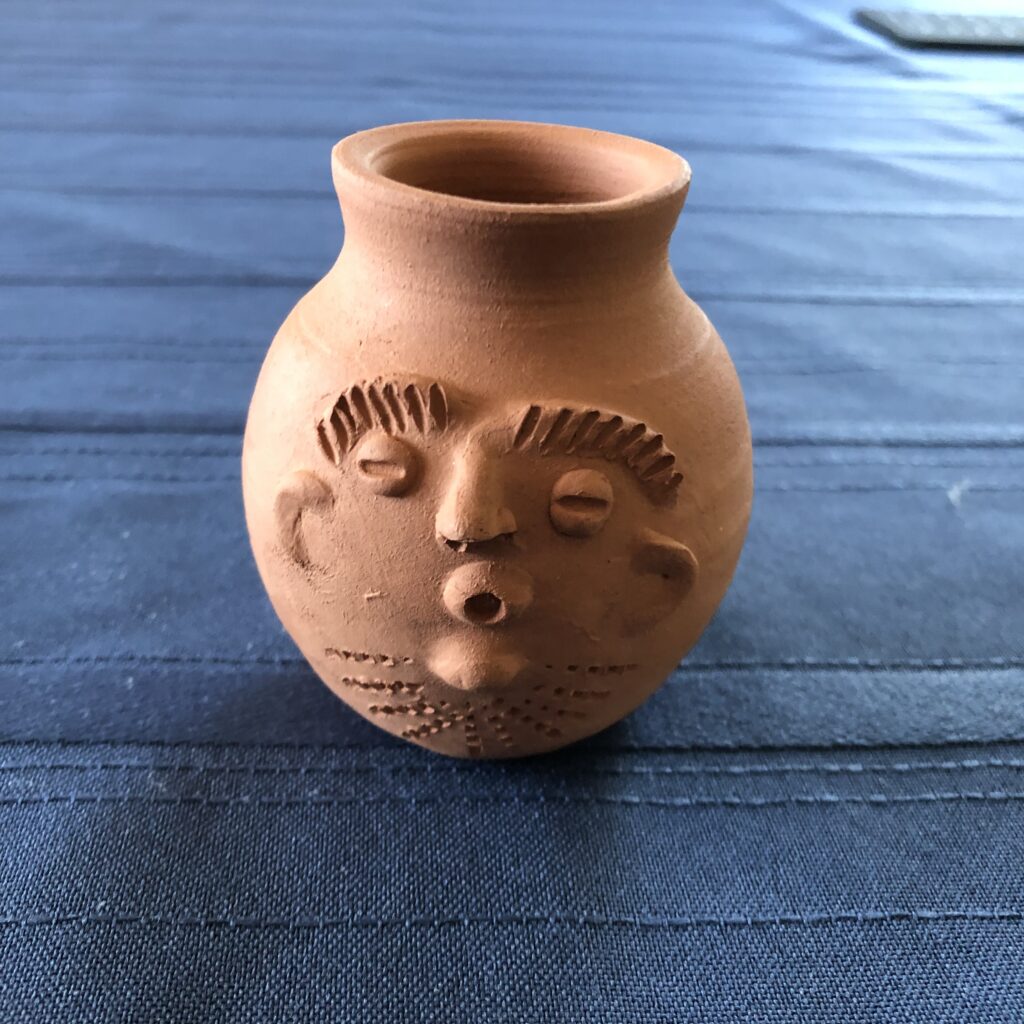 I managed to grab a few moments to eat oysters(!), chat to various Romans and visit the ceramics stall featured in the above photo and bought this delightful replica of a Roman face pot. Face pots, while never common, were widely used in Roman Britain and are among the most attractive and least documented products of the Romano-British pottery industries.
I managed to grab a few moments to eat oysters(!), chat to various Romans and visit the ceramics stall featured in the above photo and bought this delightful replica of a Roman face pot. Face pots, while never common, were widely used in Roman Britain and are among the most attractive and least documented products of the Romano-British pottery industries.
With their crude, comic-looking features stuck incongruously on a well-made Roman jar, they are quite unlike any other type of Roman pottery, where free-hand figurative decoration is practically unknown. So weird, but infinitely attractive!
Looking forward to returning there next year (if invited!)
About Roman Colchester
Camulodunum was an important city in Roman Britain, and the first capital of the province. It became known/was marketed in the 1960s as the ‘oldest recorded town in Britain’. (I wonder if they have competition for that title now.) Originally the site of the Brythonic-Celtic oppidum of Camulodunon (meaning ‘stronghold of Camulos’), capital of the Trinovantes and later the Catuvellauni tribes, it was first mentioned by name on coinage minted by the chieftain Tasciovanus some time between 20 and 10 BC.
Following Claudius’s invasion of the enigmatic, foggy and slightly strange northern island in AD43, a Roman legionary base was built in the AD 40s on the site of the Brythonic-Celtic fortress. A Roman legionary castrum (fortress) established in the confines of Camulodunon became the first permanent one in Britain and home to the Twentieth Legion. The legion withdrew around AD 49, the legionary defences were dismantled and the fortress converted into a town, with many of the barrack blocks converted into housing. A large number of Roman army veterans settled there with land grants and an unspoken mission to show the native population the advantage of the Roman way. Hm…
The town was not only the the capital of the Roman province of Britannia, but also its temple (the only classical-style temple in Britain) was the centre of the Imperial cult in the province and initially home to the provincial procurator of Britannia. It also had few soldiers (around 200-strong procurator’s guard) and no walls, so was a juicy target for Boudicca when she raised the tribes to revolt in AD60/61 and burned the whole place down, along with Londinium and Verulamium, and slaughtered every living soul.
But the Romans were a persistent lot and rebuilt the town, although the capital of Britannia moved to Londonium. Unsurprisingly, new walls and a large defensive ditch were built around the rebuilt colonia – the first town walls in Britain, predating other such walls in the province by at least 150 years.
Camulodunum (official name Colonia Claudia Victricensis) reached its zenith in the 2nd and 3rd centuries AD and was home to a large classical temple, two theatres (including Britain’s largest), several Romano-British temples, Britain’s only known chariot circus, Britain’s first town walls, several large cemeteries and may have reached a population of 30,000 at its height.
The colonia became a large industrial centre, including brick making and was the largest, and for a short time the only, place in the province of Britannia where samian ware was produced, along with glasswork and metalwork and a coin mint. Apparently they also grew grapes and made wine in the area! Dozens of mosaics and tessellated pavements have been found, along with hypocausts, sophisticated waterpipes and drains which would indicate townhouses belonging to prosperous owners.
But as with many Roman cities in Late Antiquity, the town diminished with the lessening of trade, literacy and skills in the late fourth century and the formal collapse of Roman administration in 409/411 AD, although much everyday life probably continued much the same for most people. Enter the Saxons and other eastern tribes when the area was subject to invasion, then settlement of new populations. Colchester first re-enters the written historical record again in the Anglo–Saxon Chronicle for 917, the year it was retaken from the Danes by a Saxon army led by Kindg Edward the Elder, who ‘restored’ the borough to English rule.The Temple of Claudius was a standing ruin until the Normans cleared the superstructure to incorporate the podium into Colchester Castle in the 11th Century.
I visited the castle museum and was lucky enough to join a tour of the Roman foundations of the Temple of Claudius where there was enough Roman concrete to satisfy the most avid fan!
Alison Morton is the author of Roma Nova thrillers – INCEPTIO, CARINA (novella), PERFIDITAS, SUCCESSIO, AURELIA, NEXUS (novella), INSURRECTIO and RETALIO, and ROMA NOVA EXTRA, a collection of short stories. Audiobooks are available for four of the series. Double Identity, a contemporary conspiracy, starts a new series of thrillers. JULIA PRIMA, a new Roma Nova story set in the late 4th century, will be out on 23 August.
Download ‘Welcome to Alison Morton’s Thriller Worlds’, a FREE eBook, as a thank you gift when you sign up to Alison’s monthly email update. You’ll also be among the first to know about news and book progress before everybody else, and take part in giveaways.




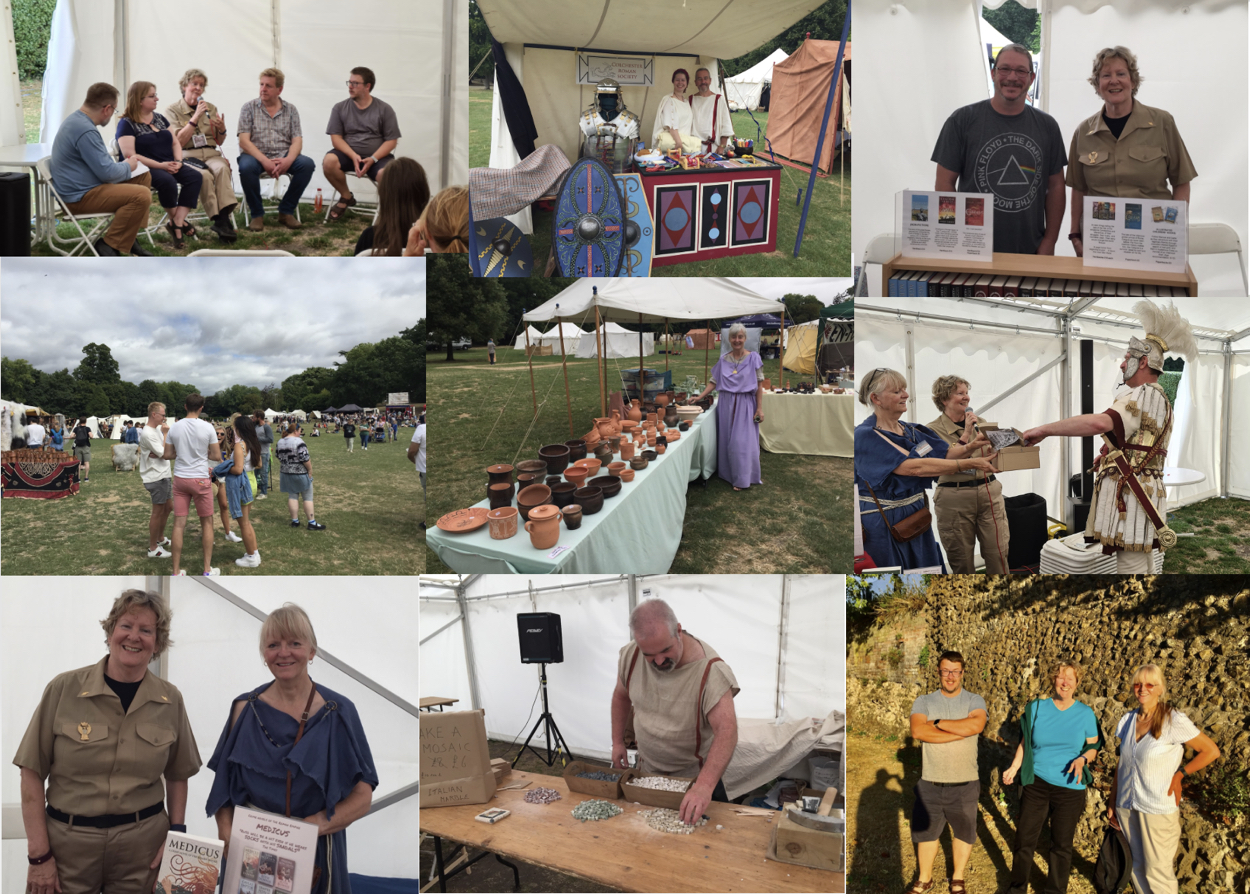
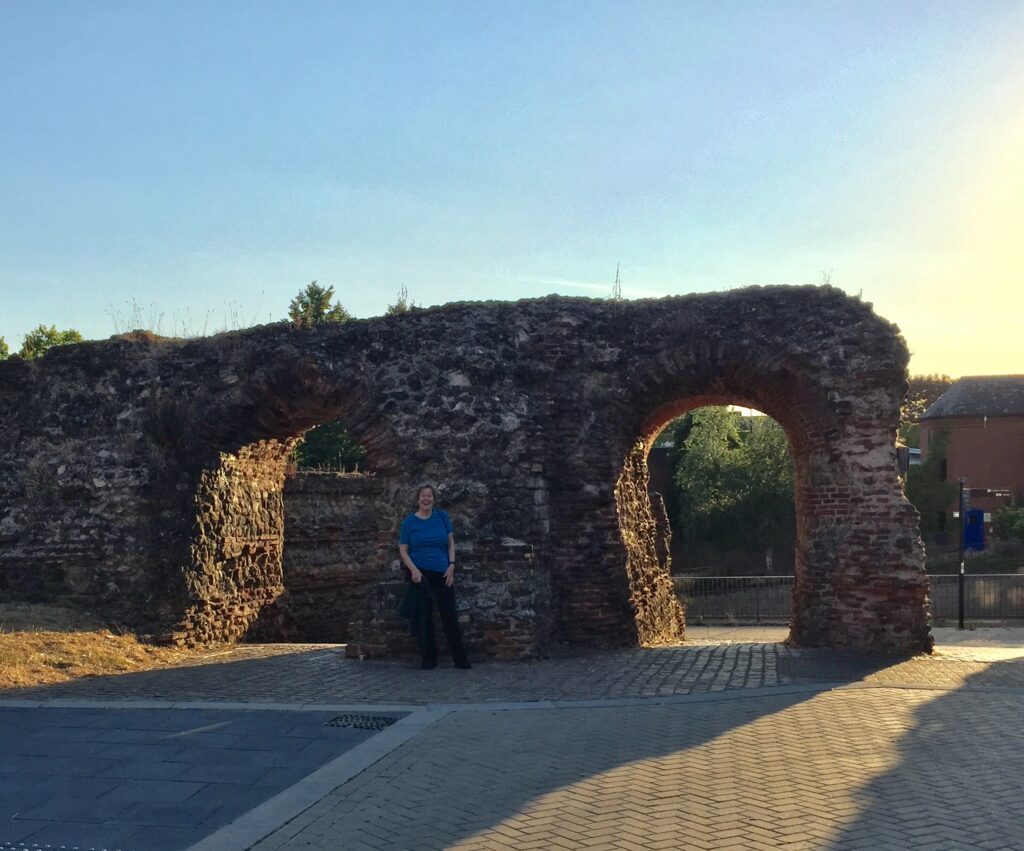
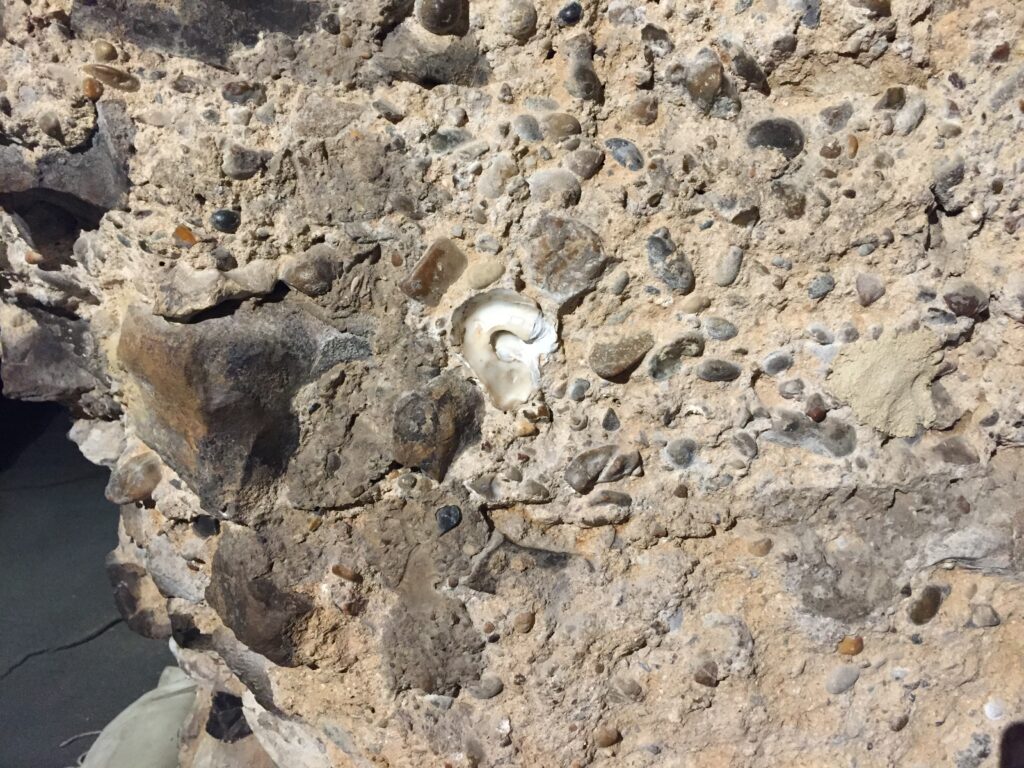
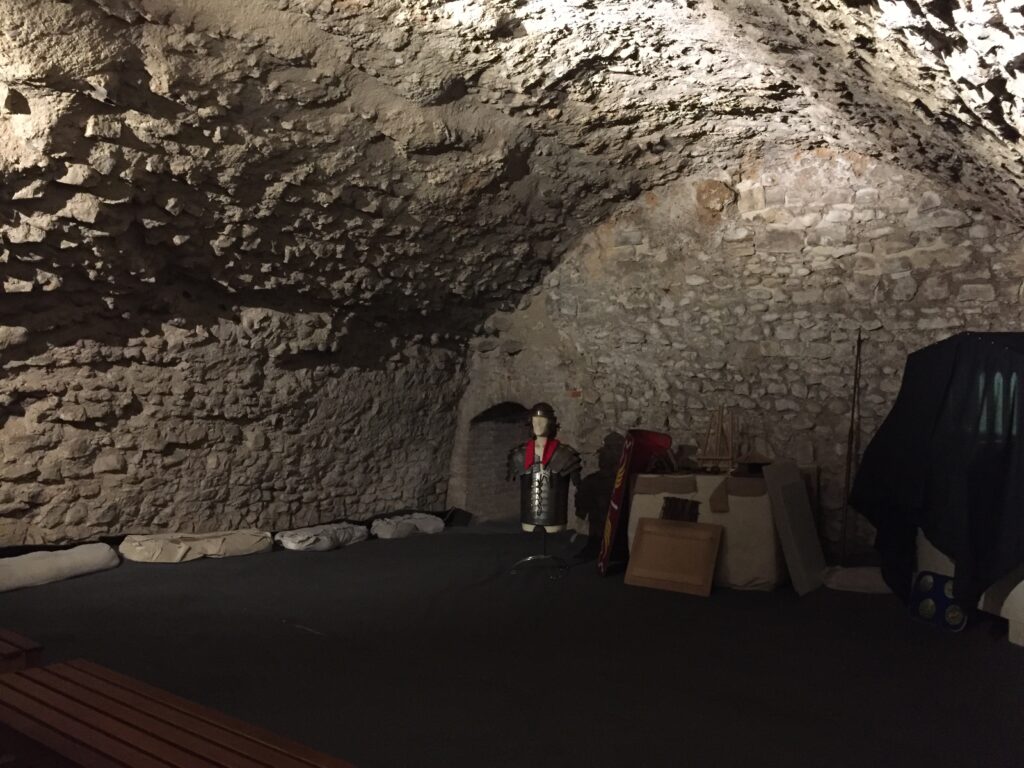









[…] Colchester Roman Festival 2022 – The first one ever! « Alison Morton’s Thrillers […]